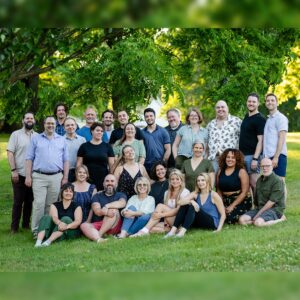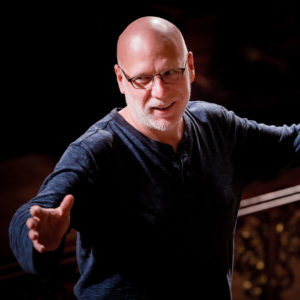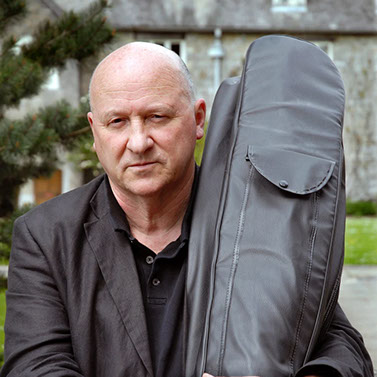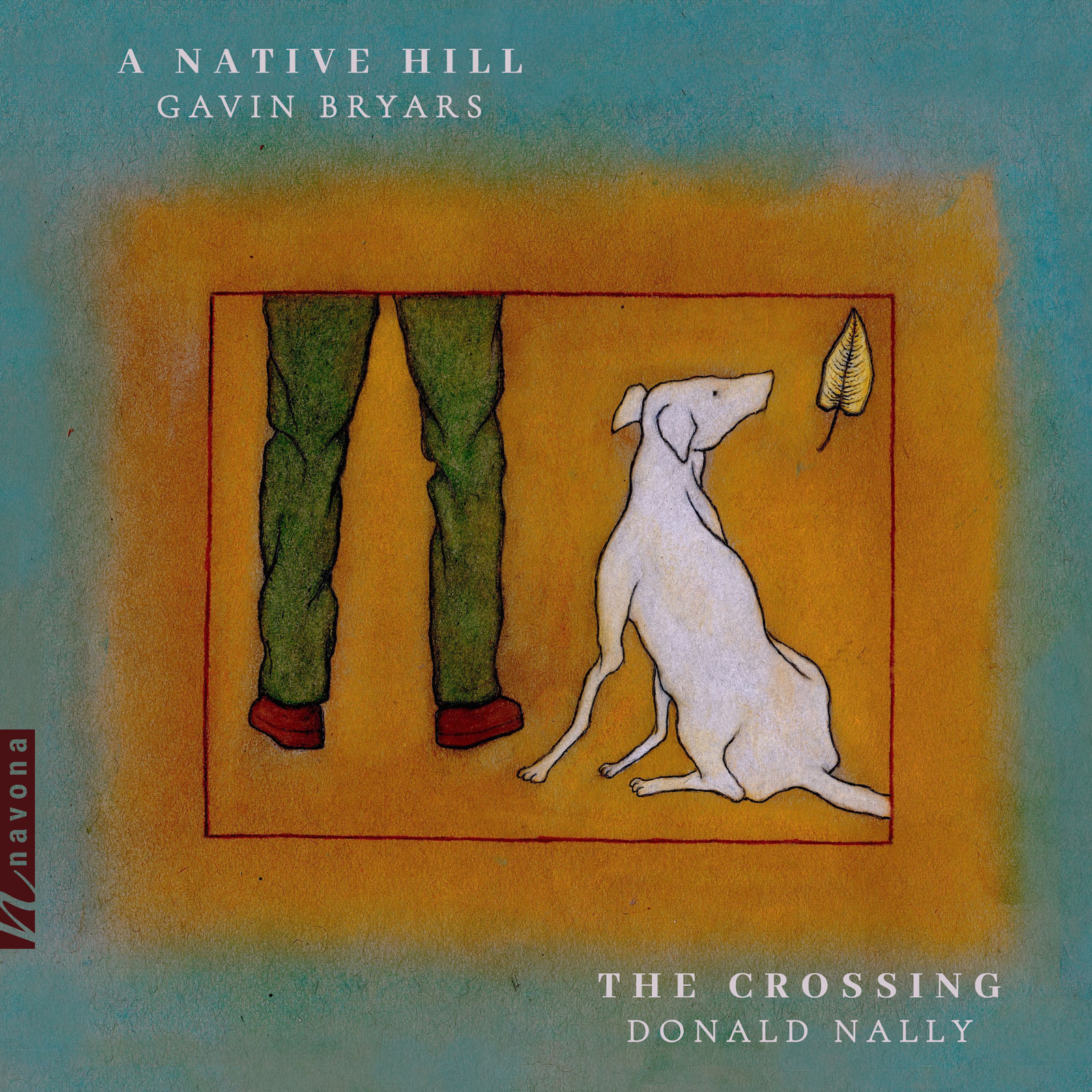A Native Hill
Gavin Bryars composer
Wendell Berry author
The Crossing | Donald Nally conductor
Navona Records presents A NATIVE HILL from Philadelphia’s professional chamber choir, The Crossing. This monumental unaccompanied work is the result of a collaboration with composer Gavin Bryars, whose previous work for The Crossing won them their first of two recent Grammy awards. With intimate knowledge of the individual voices and art of each singer, Bryars composed A NATIVE HILL to capitalize on the group’s unique sound, personality, and esprit de corps. A NATIVE HILL is based on American author and environmentalist Wendell Berry’s 1968 essay of the same name, which examines bucolic elements of rural life, suffused with deeper metaphysical and political implications. The new album is full of rich, complex vocal textures, dense chromatic clusters, and moments of profound simplicity, offering an opportunity to reflect on life’s timeless questions.
Listen
Stream/Buy
Choose your platform
Track Listing & Credits
| # | Title | Composer | Performer | |
|---|---|---|---|---|
| 01 | A Native Hill: No. 1, The Sense of the Past | Gavin Bryars | The Crossing | Donald Nally, conductor | 6:40 |
| 02 | A Native Hill: No. 2, The Path | Gavin Bryars | The Crossing | Donald Nally, conductor | 4:44 |
| 03 | A Native Hill: No. 3, Sea Level | Gavin Bryars | The Crossing | Donald Nally, conductor | 5:08 |
| 04 | A Native Hill: No. 4, The Pool | Gavin Bryars | The Crossing | Donald Nally, conductor | 3:18 |
| 05 | A Native Hill: No. 5, The Road | Gavin Bryars | The Crossing | Donald Nally, conductor | 8:15 |
| 06 | A Native Hill: No. 6, The Music of Streams | Gavin Bryars | The Crossing | Donald Nally, conductor | 8:21 |
| 07 | A Native Hill: No. 7, Questions | Gavin Bryars | The Crossing | Donald Nally, conductor | 5:15 |
| 08 | A Native Hill: No. 8, Top Soil | Gavin Bryars | The Crossing | Donald Nally, conductor | 4:27 |
| 09 | A Native Hill: No. 9, The Hill | Gavin Bryars | The Crossing | Donald Nally, conductor | 3:36 |
| 10 | A Native Hill: No. 10, Animals and Birds | Gavin Bryars | The Crossing | Donald Nally, conductor | 4:15 |
| 11 | A Native Hill: No. 11, Shadow | Gavin Bryars | The Crossing | Donald Nally, conductor | 5:02 |
| 12 | A Native Hill: No. 12, At Peace | Gavin Bryars | The Crossing | Donald Nally, conductor | 9:36 |
The Crossing
Jessica Beebe . Kelly Ann Bixby . Katy Avery . Nathaniel Barnett . Karen Blanchard . Steven Bradshaw 1 2 . Colin Dill . Micah Dingler . Ryan Fleming . Joanna Gates . Dimitri German . Dominic German . Steven Hyder . Heidi Kurtz . Maren Montalbano 2 . Rebecca Myers . Becky Oehlers . James Reese . Daniel Schwartz . Rebecca Siler . Julie Snyder . Daniel Spratlan . Elisa Sutherland . Daniel Taylor 1
1 soloist on Mvt. iv
2 soloist on Mvt. xi
Gavin Bryars music
Wendell Berry words
Donald Nally Conductor
Kevin Vondrak Assistant Conductor
John Grecia Keyboards
Album artwork by Steven Bradshaw stevenbradshawart.com
A NATIVE HILL was recorded October 8-11, 2019 at St. Peter’s Church in the Great Valley, Malvern PA
Recording Producers Paul Vazquez, Donald Nally, and Kevin Vondrak
Recording Engineers Paul Vazquez and Dante Portella
Editing, Mixing & Mastering Paul Vazquez
Production assistance Logan Henke
THE RECORDING OF A NATIVE HILL IS MADE POSSIBLE through the generous gift of a long-time supporter of The Crossing.
WE ARE GRATEFUL FOR:
Our artists, composers, audience, friends, and supporters;
Gavin Bryars;
Jack Shoemaker at Counterpoint Press;
Tony Creamer;
the staff and congregation at our home, The Presbyterian Church of Chestnut Hill;
those who opened their homes to our artists during the recording of A Native Hill: Rev. Cindy Jarvis, David and Rebecca Thornburgh, Jeff and Liz Podraza, Beth Vaccaro and Landon Jones, Rebecca Siler, Corbin Abernathy and Andrew Beck, David Newmann and Laura Ward.
THE BOARD OF DIRECTORS OF THE CROSSING
Kelly Ann Bixby
Phil Cooke
Micah Dingler
Shawn Felton
Tuomi Forrest – Vice President
Mary D. Hangley
Lisa Husseini
Cynthia A. Jarvis
Mary Kinder Loiselle
Michael M. Meloy
Donald Nally
Eric Owens
Pam Prior – Treasurer
Andrew Quint
James Reese
Kim Shiley – President
Carol Loeb Shloss – Secretary
John Slattery
Elizabeth Van de Water
THE STAFF OF THE CROSSING
Jonathan Bradley, executive director
Shannon McMahon, operations manager
Kevin Vondrak, assistant conductor & artistic associate
Paul Vazquez, sound designer
Katie Feeney, grant manager
Elizabeth Dugan, bookkeeper
Ryan Strand, administrative assistant
The Crossing is represented by Alliance Artist Management
www.allianceartistmanagement.com
COME. HEAR. NOW.
www.crossingchoir.org
Executive Producer Bob Lord
General Manager of Audio & Sessions Jan Košulič
Audio Director Lucas Paquette
Executive A&R Sam Renshaw
A&R Director Brandon MacNeil
VP, Design & Marketing Brett Picknell
Art Director Ryan Harrison
Design Edward A. Fleming
Publicity Patrick Niland, Sara Warner
Artist Information

The Crossing
The Crossing is a professional chamber choir conducted by Donald Nally, dedicated to performing new music and committed to addressing social, environmental, and political issues through nearly 180 commissioned premieres. Collaborating with prestigious ensembles and venues like the New York and Los Angeles Philharmonics, Park Avenue Armory, Lincoln Center, and Carnegie Hall, The Crossing has released 35 albums, earning three GRAMMY® Awards for Best Choral Performance and multiple nominations. The Crossing is Musical America's 2024 Ensemble of The Year.

Donald Nally
Donald Nally collaborates with creative artists, leading orchestras, and art museums to make new works for choir that address social and environmental issues. He has commissioned nearly 200 works and, with his ensemble The Crossing (Musical America’s 2024 Ensemble of the Year), has produced 35 albums, winning three GRAMMY® Awards for Best Choral Performance, while nominated nine times.

Gavin Bryars
Gavin Bryars (b. 1943) studied philosophy but became a jazz bassist and pioneer of free improvisation with Derek Bailey and Tony Oxley. Early iconic pieces The Sinking of the Titanic and Jesus’ Blood Never Failed Me Yet achieved great popular success.
Notes
music by Gavin Bryars (b. 1943)
words by Wendell Berry (b. 1934)
Composed as a gift for The Crossing; dedicated to Cassia Bryars-Rockey; In memoriam Julian Rockey.
First performance of movements 1-5:
14 December 2018
The Crossing
Donald Nally, conductor
Church of the Holy Trinity, Rittenhouse Square
Philadelphia PA
First complete performance
13 October 2019
The Crossing
Donald Nally, conductor
The Presbyterian Church of Chestnut Hill
Philadelphia PA
a note from the composer:
Following the success of our previous collaboration, I composed a substantial new a cappella work for The Crossing as a gift to the choir. It draws on our close working relationship and the personal friendships that have developed between us as well as my intimate knowledge of the singers’ individual characteristics, and there are solo parts written specifically for particular voices.
The piece is in twelve sections, setting extracts from the American writer Wendell Berry’s 1968 essay “A Native Hill.” Although at first appearance pastoral, Berry’s descriptions of the minutiae of his rural existence have a profound metaphysical and even political force. He has been called, a little simplistically perhaps, a modern-day Thoreau, although here his visionary prose has something of the mysticism of the text for my previous work with The Crossing when I set Thomas Traherne.
Quite coincidentally, I finished the piece on August 29th, the day my granddaughter Cassia was born, and I had worked on it, on and off, for nine months – the whole period of my daughter Orlanda’s pregnancy; and Cassia’s father, Orlanda’s partner Julian, had died suddenly half way through.
Completing the work in Canada throughout the summer was an intense experience: I had Orlanda’s situation always in mind ever since I left England in mid-June. In addition, I worked on the piece with a care and scrutiny beyond anything I have done before. Generally I compose very quickly, though usually after a period of reflection and study, often around questions of text while being mindful of the need to deliver. But here I did not set myself a specific deadline, and the result of this was that the energy I would normally have put into the speed of writing was diverted into detail and concentration.
This had already shown itself in the fourth section, The Pool, where the tenor solo voice is accompanied by complex textures involving extreme, though very quiet, harmonic colouring by groups of solo voices. My knowledge of the choir’s ability to rise to these challenges also encouraged me to experiment with background humming and whistling by pairs of solo voices in the tenth section, Animals and Birds. And I decided to open the last part, At Peace, with all 24 voices having completely independent and unconnected notes to make a chromatic cluster out of which cleaner harmonies could come into focus and melodic movement could be revealed. This dense covering reappears to a greater and lesser extent throughout the movement, with its eventual evaporation allowing the sense of being at peace to emerge. But, at the same time, there are also many moments of simple, church-like music. And this combination of the apparently traditional and deceptive complex comes about through a close reading of the text and reflects a deep respect for Wendell Berry’s beautiful prose.
— Gavin Bryars, 14 September 2019, Biarritz, France
Texts
–from the essay A Native Hill (1968).
© 2002 by Wendell Berry, from The Art of the Commonplace: The Agrarian Essays. Reprinted by permission of Counterpoint Press.

